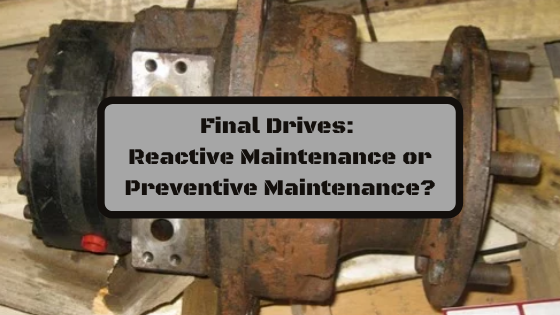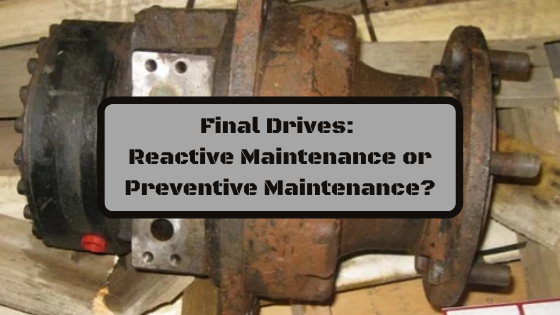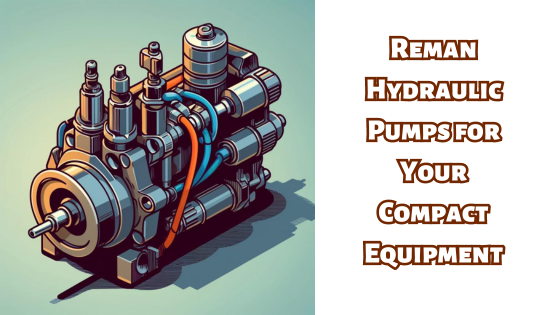Final Drives: Reactive Maintenance or Preventive Maintenance?
Posted by Jim Strong on Dec 26th 2021
Are you reacting or preventing? Reactive maintenance and preventive maintenance are the two main approaches to caring for the final drives on your equipment.

Here are a few other Shop Talk Blog posts you might find interesting:
- Hydraulic Fluid Complications For Newer Machines
- Hydraulic Pump Rebuilds
- Travel Drive Motors: A Bearing Gone Bad
The final drive motors on your equipment are crucial to keeping everything running -- literally and figuratively. Let's discuss the two primary ways people maintain their final drives and discuss which one works best. But before driving in, let's review what basic track drive maintenance involves.
Essential Final Drive Care
Final drive maintenance includes:
- Checking the gear oil levels
- Changing out the gear oil
- Replacing the case drain filter (if your machine has one)
- Perform visual checks for leaks of either gear oil or hydraulic fluid
- Replacing leaking seals
- Keeping the undercarriage of your machine clean
Not too bad, huh?
Reactive Maintenance
Reactive maintenance means you only restore your equipment to operating after it breaks down. In other words, you don't perform maintenance on your equipment until something significant happens. Reactive maintenance means running your equipment until something goes seriously wrong or until a catastrophic failure occurs.Here are some examples of what reactive maintenance looks like for a final drive motor:
- Waiting until the drive motor is full of contamination before replacing a leaking face seal
- Waiting until the final drive starts making grinding noises before you check the gear oil level
- Waiting until the cover plate has blown off to see if the case drain filter is clogged
Preventive Maintenance
Preventive maintenance is performed on a schedule. And it is performed regardless of whether your equipment is working well. So, for example, you don't wait until something goes wrong to replace hydraulic filters, check gear oil levels, etc.
In other words, you do maintenance tasks on a regular schedule. You can base this schedule on manufacturer requirements, expert guidelines, or just from knowing your equipment needs. Note that you can establish your maintenance on calendar time (e.g., every year) or hours of operation (e.g., 1,000).
Reactive Maintenance vs. Preventive Maintenance
Preventive maintenance works exceptionally well at preventing final drive failure. And while there is downtime involved in maintenance, it is much less than what happens when your drive motors fail. It is also less costly in terms of both person-hours and supplies than it will cost to repair or replace a final drive motor.
Regular maintenance can also help you spot problems before they become serious. For example, if you notice the gear oil needs to be topped off repeatedly, that points to a seal that needs replacing. And it's going to be cheaper to schedule a time to replace a seal than having a sudden failure -- and extensive repairs.
While reactive maintenance may seem to work well on a new final drive, it's a disaster waiting to happen on older drive motors. And the longer you depend on reactive maintenance, the faster that travel drive will wear out.
Conclusion
Here at Final Drive Parts, we know that maintenance is the key to keeping your repair costs low and helping your drive motors last as long as possible. So don't be reactive -- be preventive.








